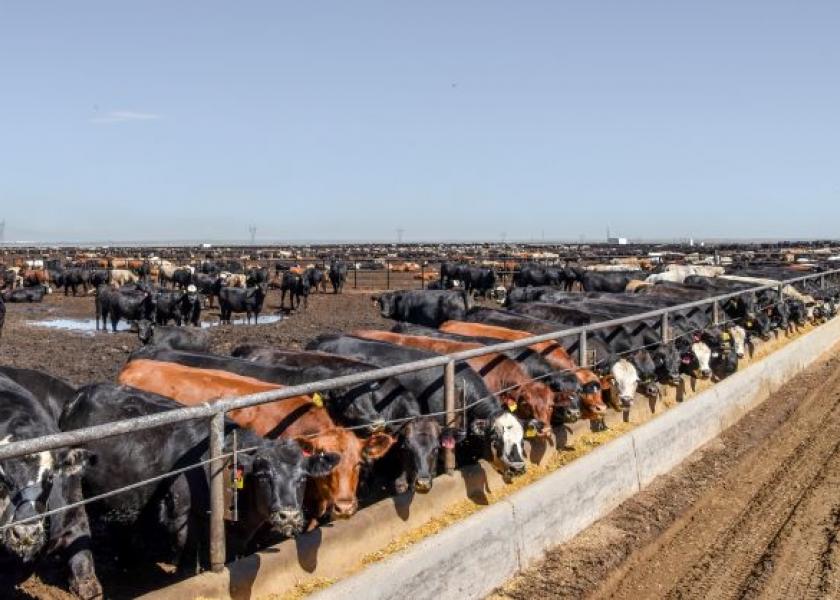Cash Cattle: North Steady, South $2 Lower

Cash cattle trade was called moderate to active for the week ending May 12, with the North selling at mostly $176 to $177 per cwt., steady with last week. Cattle traded in the South at mostly $170 per cwt., $2 lower than the previous week. Feeder cattle traded in a wide range at $3 lower to $3 higher. Calves sold mixed from $4 lower to $5 higher. Market cows steady to $2 higher.
Wholesale beef prices declined on the week. Choice boxed beef closed Friday at $304.61 per cwt., down $4.93 for the week. Select boxed beef closed Friday at $284.68 per cwt., down $0.78 per cwt.
Estimated weekly cattle slaughter was 646,000 head, up 23,000 head from the previous week, and down 5,000 from last year. The year-to-date total is down 3.1% from last year.
At the CME, June live cattle futures ended the week at $164.40, up $1.45 on the day and $2.475 on the week. August feeder futures leapt $2.90 to a Friday settlement of $228.975; that represented a weekly jump of $7.55.
Analysts said Wednesday’s depressed cash cattle quotes were apparently confined to the Southern Plains, which was probably why cattle futures didn’t react very negatively to the losses Thursday. Thursday’s cash action in the north proved much stronger, with the higher quotes balancing out those from Wednesday. The Monday-Thursday cash average came in at $173.89, which represented a drop of just 9 cents from the week-prior level. Traders apparently didn’t expect that firmness, as indicated by Friday’s big futures gains. Indeed, the futures strength seems to bode well for next week’s cash action. The market may also be anticipating renewed wholesale beef firmness since grocers will likely be quite active as they complete their beef purchases for planned Memorial Day features.







